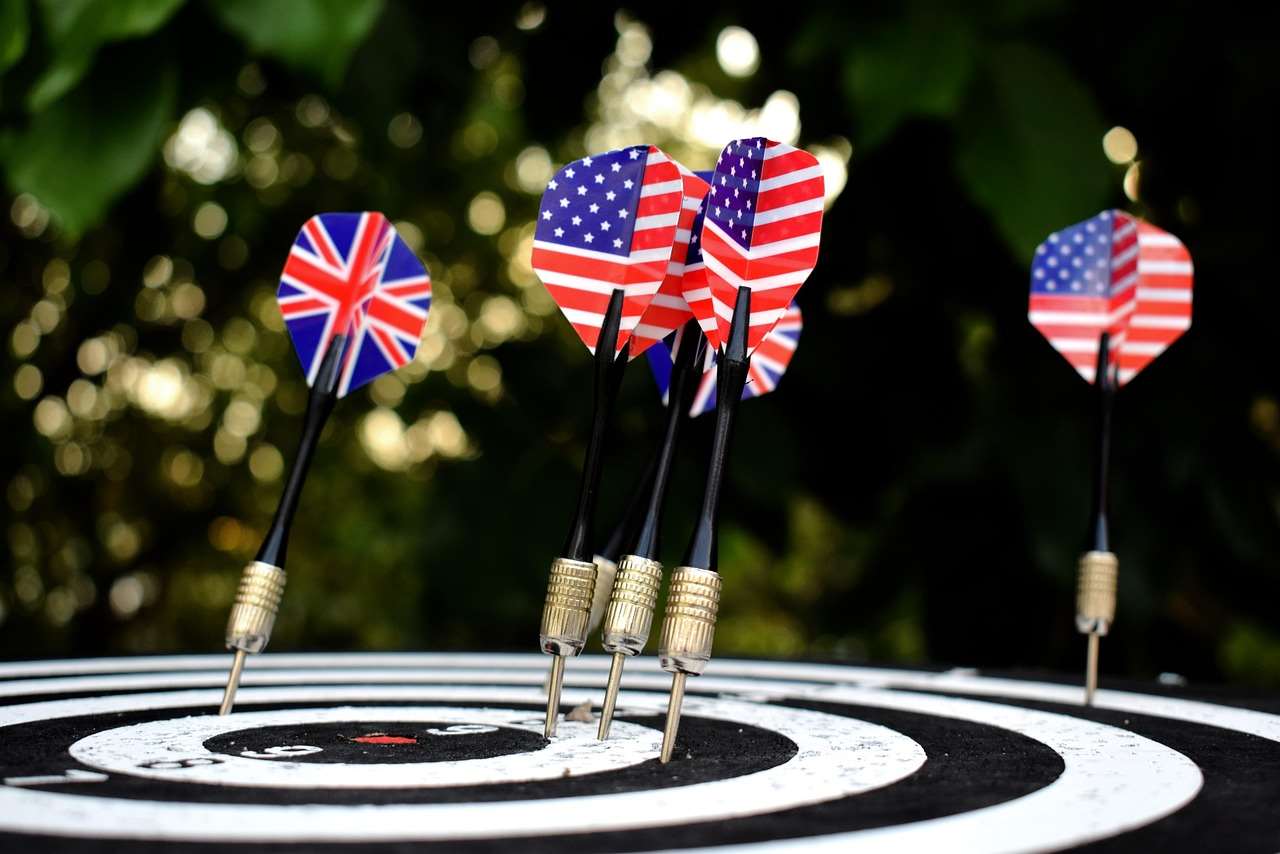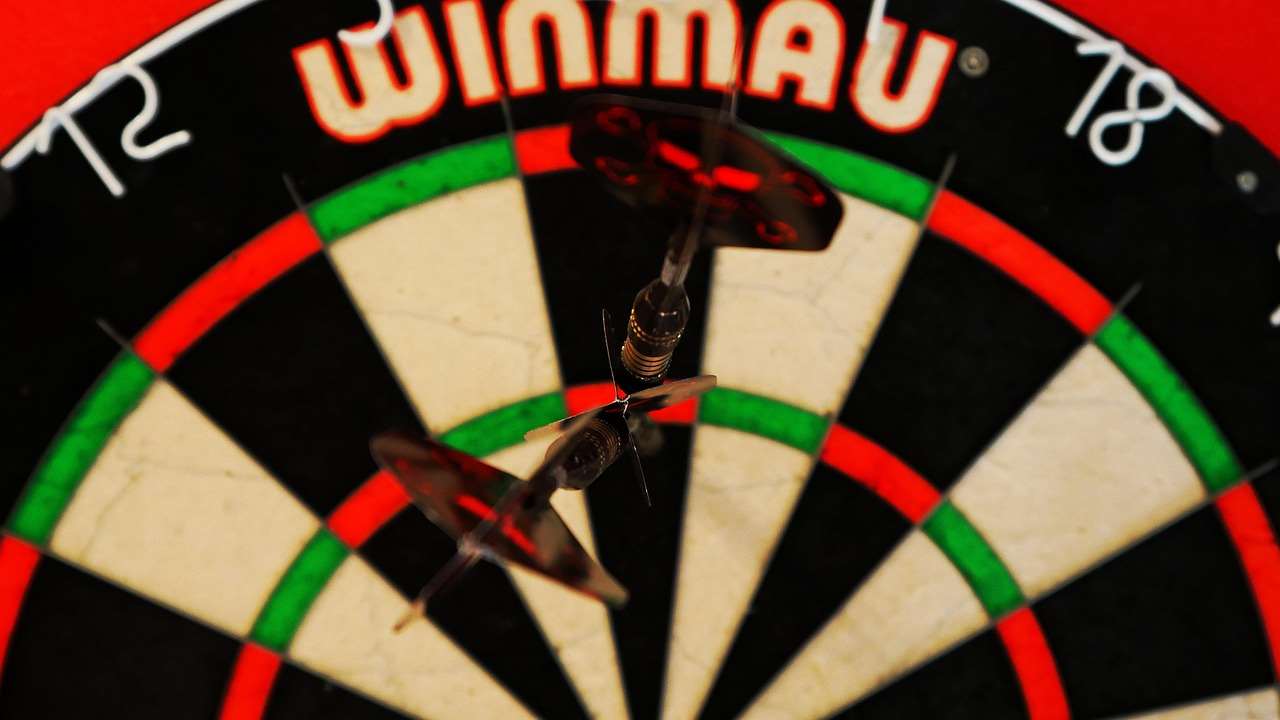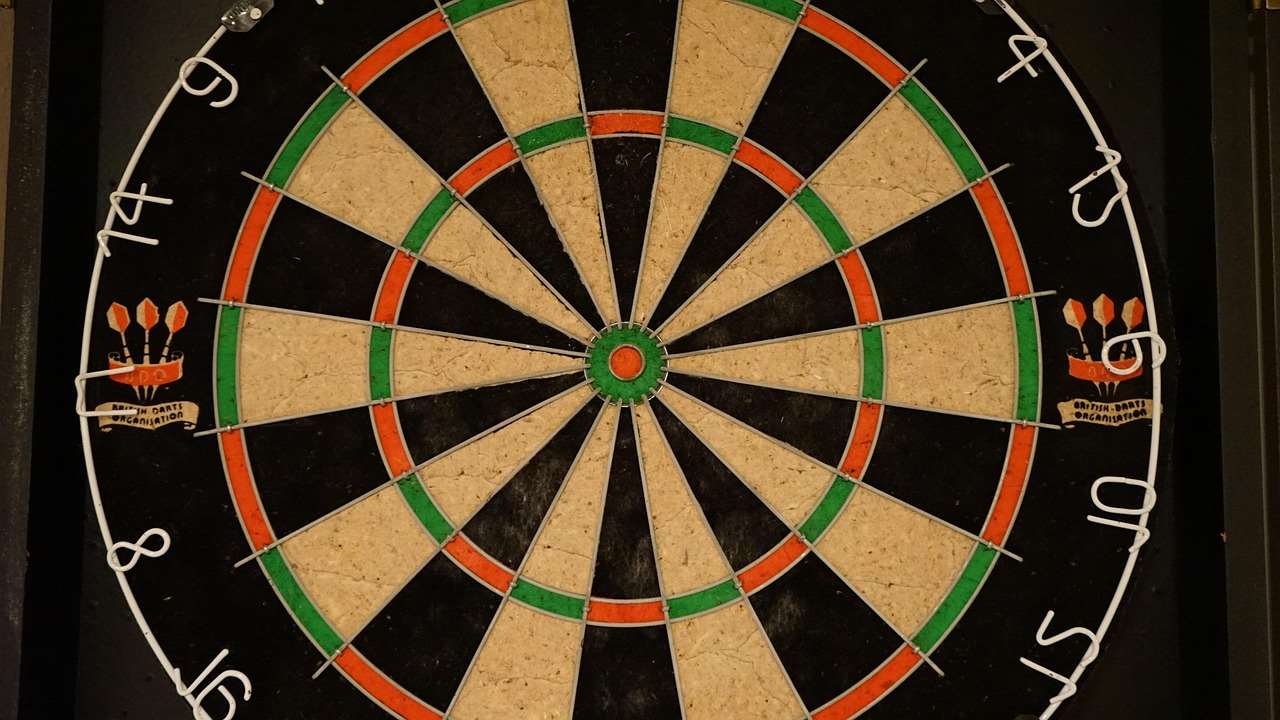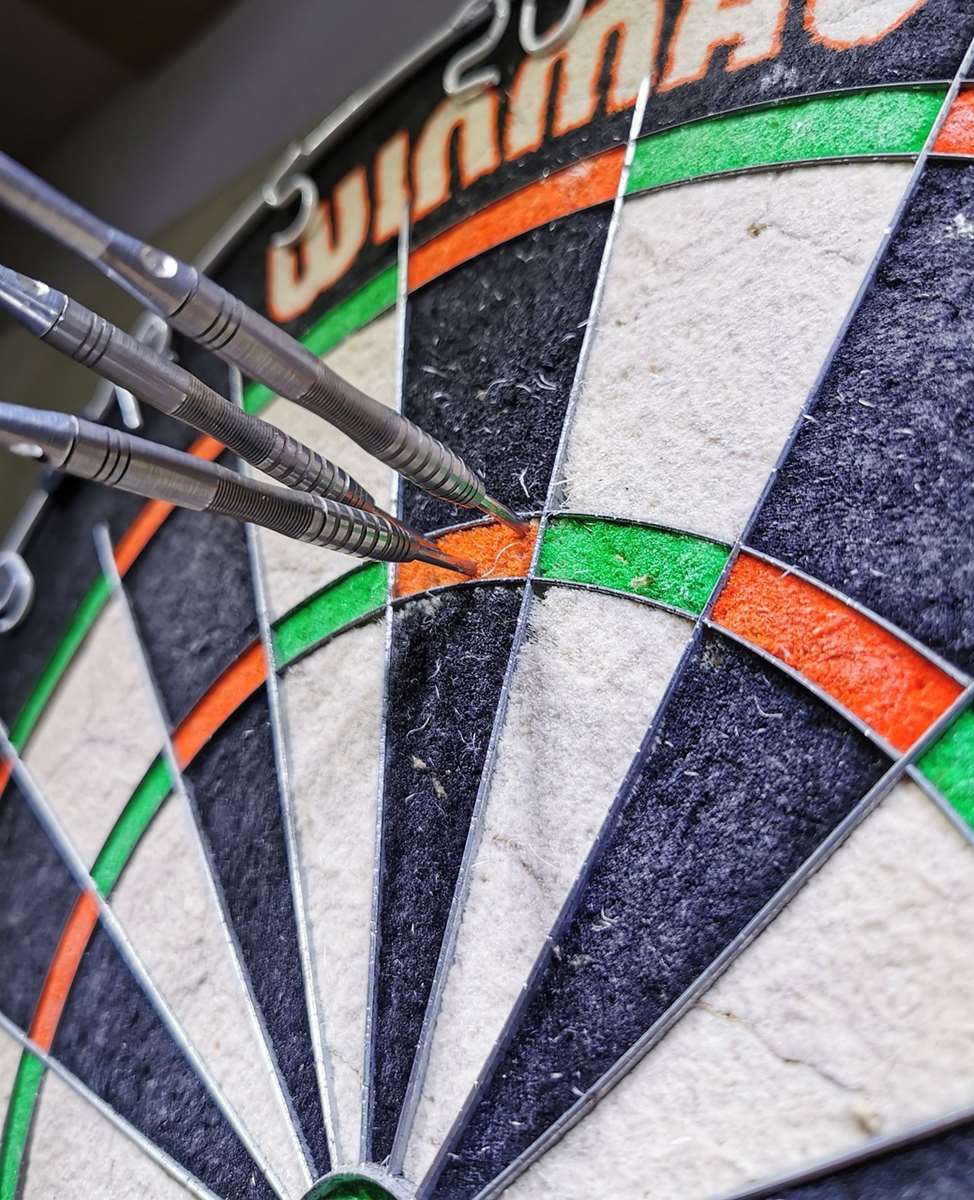Understanding the correct darts okey length – the distance a player stands from the dartboard – is crucial for accuracy and consistency; the official distance is 7 feet 9 1/4 inches (2.37 meters) from the front of the board. This article will delve into the specifics of setting up your dartboard, measuring the oche (or throw line), and optimizing your stance for improved gameplay, addressing common questions about **dartboard setup** and oche height.
⚠️ Still Using Pen & Paper (or a Chalkboard)?! ⚠️
Step into the future! The Dart Counter App handles all the scoring, suggests checkouts, and tracks your stats automatically. It's easier than you think!
Try the Smart Dart Counter App FREE!Ready for an upgrade? Click above!
The Importance of Accurate Darts Okey Length
Having the correct darts okey length is more than just a formality; it’s a fundamental aspect of the game that significantly impacts your throwing technique and overall performance. Throwing from the wrong distance can lead to inconsistent throws, strained muscles, and ultimately, a frustrating experience. Standardizing the distance allows players to develop a consistent rhythm and muscle memory, leading to greater accuracy and higher scores.
Imagine trying to shoot free throws in basketball with the free-throw line constantly changing – it would be incredibly difficult to develop a consistent shot! Similarly, an incorrect darts throw line distance hinders your ability to master your dart throwing motion. Ensuring that your dartboard setup dimensions are accurate is therefore paramount.

Setting Up Your Dartboard: Achieving the Correct Measurements
To achieve the correct darts okey length, you need to consider two primary measurements: the height of the bullseye and the distance from the board to the throw line. Proper setup ensures fair play and consistent practice.
Dartboard Height
The official height of the bullseye (the center of the dartboard) is 5 feet 8 inches (1.73 meters) from the floor. This is a universal standard, regardless of the type of dartboard (steel-tip or soft-tip) or the playing surface. Use a measuring tape to ensure accuracy.
Measuring the Darts Okey Length (Throw Line)
Once the dartboard is mounted at the correct height, you can measure the darts okey length. Here’s how to do it accurately:
- Steel-Tip Darts: Measure 7 feet 9 1/4 inches (2.37 meters) horizontally from the face of the dartboard (not the wall). This is the standard distance for steel-tip darts. The darts throw line distance is critical.
- Soft-Tip Darts: The distance for soft-tip darts is slightly longer, typically 8 feet (2.44 meters). Always check the specific rules of the soft-tip darts game you are playing, as some variations may exist.
Mark the throw line (oche) clearly. You can use tape, a piece of wood, or a dedicated oche to define the line. The player must stand behind this line when throwing.
Remember to double-check your measurements! A small error can significantly affect your game. Consider using a laser measure for the most precise measurement of the darts okey length.
Common Mistakes in Dartboard Setup
Several common mistakes can lead to inaccurate dartboard setup dimensions, negatively impacting your game. Avoiding these errors is crucial for a consistent playing experience.
- Incorrect Bullseye Height: Ensure the bullseye is exactly 5 feet 8 inches from the floor. Even a small difference can alter your throwing angle and consistency.
- Measuring from the Wall Instead of the Dartboard Face: Always measure the darts okey length from the face of the dartboard, not the wall behind it. The thickness of the dartboard can affect the accuracy of the distance.
- Sloping Floors: If the floor is not level, the dartboard may appear to be at the wrong height. Use a level to ensure the dartboard is plumb before measuring the bullseye height.
- Inconsistent Throw Line: A wobbly or poorly defined throw line can lead to players inadvertently stepping over the line or throwing from different distances each time. Ensure the oche is stable and clearly marked.
By avoiding these common mistakes, you can ensure that your dartboard setup dimensions are accurate, providing a fair and consistent playing field. Practicing from the correct distance will help you develop a more reliable throwing technique.

Optimizing Your Stance and Throwing Technique
Once you’ve established the correct darts okey length and dartboard height, it’s time to focus on your stance and throwing technique. These elements, combined with accurate measurements, will contribute to improved accuracy and consistency. You may even want to use some darts score software to track your progress.
Finding Your Ideal Stance
There is no single “correct” stance for everyone, but some general principles can help you find what works best for you:
- Foot Placement: Most players prefer to stand with their dominant foot forward, angled slightly towards the dartboard. Experiment with different angles to find a position that feels comfortable and balanced.
- Body Alignment: Keep your body relatively still during your throw. Minimize swaying or leaning, as this can disrupt your aim.
- Weight Distribution: Distribute your weight evenly between both feet, or slightly more on your front foot. This provides stability and prevents you from falling forward during your throw.
Developing a Consistent Throwing Motion
A consistent throwing motion is key to achieving accuracy in darts. Here are some tips for developing a repeatable technique:
- Grip: Experiment with different grips to find one that feels comfortable and provides good control over the dart.
- Stance: Keep your stance and body as still as possible throughout your throw.
- Arm Movement: Bring your arm back smoothly and consistently, keeping your elbow high.
- Release: Release the dart at the same point in your motion each time, following through towards the target.
- Practice: Consistent practice is essential for developing muscle memory and refining your throwing technique.
Remember to practice regularly and focus on consistency rather than power. The goal is to develop a smooth, repeatable throwing motion that allows you to consistently hit your target.
Advanced Tips for Darts Players
Beyond the basics of darts okey length and stance, several advanced techniques can help experienced players further improve their game. These include fine-tuning your equipment, mental preparation, and strategic gameplay.
Equipment Considerations
Choosing the right equipment can make a significant difference in your performance. Consider these factors:
- Dart Weight: Experiment with different dart weights to find one that suits your throwing style. Heavier darts tend to be more stable in the air, while lighter darts may be easier to control.
- Dart Shape and Balance: Different dart shapes and balance points can affect the way the dart flies. Try out different shapes to see what feels most comfortable and accurate for you. Some players swear by long barrel darts.
- Flights and Shafts: Flights and shafts affect the aerodynamics of the dart. Experiment with different shapes, sizes, and materials to optimize the flight path of your darts. Consider cosmo darts fit flight systems.
Mental Game
Darts is a mental game as much as it is a physical one. Developing a strong mental game can help you stay focused, manage pressure, and perform at your best. Use an Electronic dart score counter to keep score and track your practice sessions.
- Visualization: Practice visualizing yourself hitting your target before each throw. This can help you focus your mind and improve your accuracy.
- Breathing Techniques: Use deep breathing techniques to calm your nerves and reduce anxiety during pressure situations.
- Positive Self-Talk: Replace negative thoughts with positive affirmations. Believe in your ability to hit your target.
Strategic Gameplay
Understanding the strategy of darts can give you an edge over your opponents. Consider these factors:
- Scoring Strategy: Learn which numbers to aim for to maximize your score and set up finishes.
- Checkout Strategy: Develop a plan for finishing the game quickly and efficiently.
- Opponent Analysis: Pay attention to your opponent’s strengths and weaknesses and adjust your strategy accordingly.

The Oche: More Than Just a Line
While the darts okey length dictates the distance, the oche itself (the throw line) plays a crucial role in maintaining fairness and consistency. It’s not just a line; it’s a boundary that ensures all players throw from the same predetermined point.
Types of Oches
Oches come in various forms, from simple tape markings to more elaborate, raised platforms. Here’s a look at some common types:
- Tape Oches: The simplest and most affordable option. Durable tape is used to create a clear line on the floor. However, tape can wear down quickly and may not provide a tactile boundary.
- Wooden Oches: A more durable option, typically consisting of a raised wooden strip or plank. These provide a solid, tactile boundary for the player’s foot.
- Rubber Oches: Similar to wooden oches but made from rubber. They offer good grip and cushioning, reducing fatigue during long practice sessions.
- Electronic Oches: Some high-end dart setups include electronic oches that automatically detect when a player steps over the line.
Maintaining Your Oche
Regardless of the type of oche you use, it’s important to keep it clean and well-maintained. A damaged or poorly defined oche can lead to inconsistent throws and disputes during gameplay.
- Regular Cleaning: Clean your oche regularly to remove dirt and debris.
- Repairing Damage: Repair any damage to your oche promptly. Replace worn-out tape or fix loose wooden planks.
- Ensuring Visibility: Make sure the oche is clearly visible, especially in low-light conditions. Consider using reflective tape or paint to enhance visibility.
By taking care of your oche, you can ensure a fair and consistent playing experience for all players, upholding the integrity of the game.

Darts Okey Length: Variations and Rule Considerations
While the standard darts okey length is generally accepted, some variations and rule considerations can come into play depending on the specific game or tournament. It’s always best to clarify the rules beforehand to avoid any confusion or disputes.
Soft-Tip vs. Steel-Tip Darts
As mentioned earlier, the darts okey length differs slightly between soft-tip and steel-tip darts. Soft-tip darts typically require a slightly longer distance (usually 8 feet or 2.44 meters) compared to steel-tip darts (7 feet 9 1/4 inches or 2.37 meters). Always verify the specific rules for the type of game you are playing.
Tournament Rules
Many tournaments have specific rules regarding the darts okey length and other setup requirements. It’s essential to familiarize yourself with these rules before participating in any competition. Tournament organizers often provide detailed guidelines outlining all relevant regulations.
Amateur vs. Professional Play
While the official darts okey length is the same for both amateur and professional play, the level of scrutiny may differ. Professional tournaments typically have stricter enforcement of the rules and regulations, including the accuracy of the dartboard setup. Amateur games may be more lenient, but it’s still advisable to adhere to the standard measurements for a fair and consistent playing experience. It also helps to understand darts legs or sets.
Always prioritize accuracy and adherence to the rules, regardless of the level of play. This ensures fairness and promotes good sportsmanship.

Conclusion: Mastering the Darts Okey Length for Enhanced Gameplay
In conclusion, mastering the correct darts okey length is paramount for consistent and accurate dart throwing. By understanding the proper measurements, avoiding common setup mistakes, optimizing your stance and throwing technique, and adhering to relevant rules and regulations, you can significantly improve your game. Remember to always double-check your measurements and maintain your equipment for optimal performance. A commitment to proper setup will lead to a more rewarding and enjoyable darts experience.
Ready to take your darts game to the next level? Ensure your setup is perfect, practice consistently, and experiment with different techniques. Start by verifying your darts okey length today, and watch your accuracy soar! Also be sure to check out more dart related articles such as hearts card game.
Hi, I’m Dieter, and I created Dartcounter (Dartcounterapp.com). My motivation wasn’t being a darts expert – quite the opposite! When I first started playing, I loved the game but found keeping accurate scores and tracking stats difficult and distracting.
I figured I couldn’t be the only one struggling with this. So, I decided to build a solution: an easy-to-use application that everyone, no matter their experience level, could use to manage scoring effortlessly.
My goal for Dartcounter was simple: let the app handle the numbers – the scoring, the averages, the stats, even checkout suggestions – so players could focus purely on their throw and enjoying the game. It began as a way to solve my own beginner’s problem, and I’m thrilled it has grown into a helpful tool for the wider darts community.